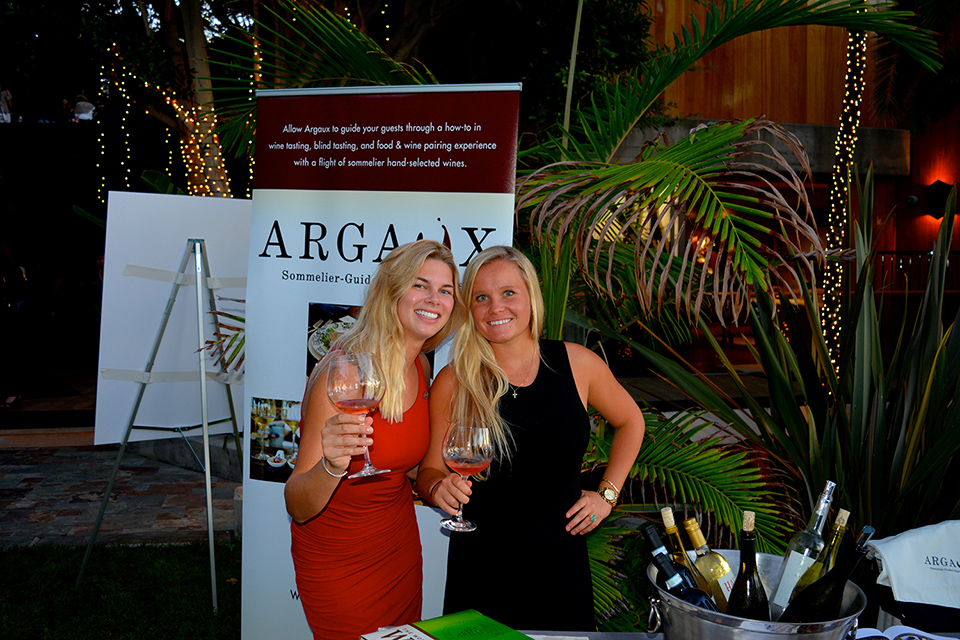
Last week, I arrived at a dinner party with 2013 Loca tempranillo in hand to find that the host did not own any red wine glasses. We were forced to use a set of 1940s sherry tumblers found on the bottom shelf of her china cabinet and let me tell you, the experience was as convoluted as the palm tree branch etchings in the crystal.
To avoid the same mistake this season, I sat down with local sommeliers Arden Montgomery and Margaux Reaume for their recommendations on proper glassware. The pair offer guided tastings, dinners and catering for private events in homes, event spaces and restaurants through their company, Argaux, and are no strangers to the importance of choosing the right drinking vessels.
“Difference is glassware may seem silly, but it’s a real thing,” Margaux says. “I recently went to a Riedel tasting, and I was shocked by how different each wine tasted in different glasses. The point of the varied sizes and shapes is to direct the wine to different spots in the mouth to maximize flavor and experience.”
While renowned European glassmaker Riedel produces grape varietal-specific stemware, you don’t have to set six different types of glasses to impress guests at your holiday table. To enhance a wine’s flavor profile and your overall affair, keep these five tips in mind when choosing glassware for celebratory soirees.
1. Crystal > glass
There are two types of stemware: crystal and glass. The former contains minerals that increase durability, which allows the glass to be spun delicately thin and thereby enhances the overall experience. “Crystal glassware is said to be a little more temperature controlled,” the Argaux duo adds. “[We] have found that the aromas of the wine are clearer and stronger.” The pair recommends Austrian brand Zalto, which boasts “gorgeous” and “incredibly impressive” hand-blown styles, or Schott Zwiesel, which are “a bit more durable and definitely more affordable.”
2. Stick with stems.
“Wine is very temperature sensitive and when it is served in a stemless glass, it tends to warm up quicker because of the contact of the hand on the bowl of the glass,” the Argaux founders explain. While hand-held tumblers can prove more versatile, experienced oenophiles will appreciate the purity of tradition.
3. Provide different glasses for white and red wine.
White wine glasses should have the traditional U-shape and a narrow mouth, as this design “places the wine at the tip of your tongue and guides it down the sides to taste the sweetness,” the pair explains. Red wines should be served in glasses with bigger bowls, though light and heavy varietals will vary by rim style: Pinot noir, for example, should be sipped from a narrow mouth that “directs the wine to the tip of the tongue so that the delicate and soft flavors … are not lost,” while heavier reds like cabernet are better poured into glasses with a large mouth to “allow the wine to shoot to the back of the mouth, coat the entire tongue and maximize the flavor profile,” they say.
4. Polish before guests arrive.
Not only does crystal glassware enhance the experience, but it also provides a clear surface for guests to view their vino, particularly when polished. “The glass needs to be crystal clear so that one can properly study the viscosity and color of the wine,” the sommeliers say. This is also a benefit to buying stemmed glasses: “If you are using stemless, your hands are all over the bowl, dirtying the glass and interfering with the sight of the wine,” they explain.
5. Invest in a decanter.
While it won’t improve the quality of a wine, the process of decanting—transferring the liquid to another vessel—can “allow the wine some time to unfold and reveal more of its own complexity,” the Argaux pair says. For older wines, the process can remove bitter sediment, while younger wines benefit from the increase in oxygenation. “Sometimes younger wine can appear ‘tight,’ ” they explain. “Decanting it will allow it to unwind and mellow out.” For high tannin wines, the sommeliers uncork the bottle several hours before drinking; younger, softer wines require 30 minutes to an hour. And for older, dry red wine, they decant just before serving. “This allows you to fully experience the wine as it changes in the glass,” the duo explains. “Twenty minutes later, you could try the wine again and it could taste like a completely different wine. That is what makes it so enchanting.”
Of course, if all else fails you can always rely on a universal wine glass to accentuate a wide range of varietals—welcoming 50 people into your home is stressful as it is without having to curate crystal. For an enhanced experience, Zalto offers an impressive option built for full-bodied wines that is also dishwasher-safe: In the end, the perfectly balanced style that’s complementary to varietals ranging from chardonnay to chianti might be all you need to ring in the New Year.
—Written by Kristin Lee Jensen




